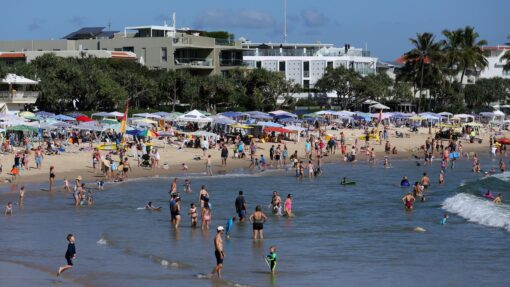New house approvals slide for fifth month in a row
Poppy Johnston |
Approvals for private sector houses have fallen to their lowest point in 10 years although the slowdown in application processing over the holiday period likely contributed to the weak result.
House approvals fell by 13.8 per cent in January, down for the fifth month in a row, Australian Bureau of Statistics data shows.
Sign-off on private sector dwellings excluding houses, which is typically a more volatile series, sunk 40.8 per cent, largely unwinding the 41.9 per cent uptick in December.
Overall, total dwelling approvals fell 27.6 per cent in January after a glut of large apartment projects drove a 15.3 per cent lift in December.
All states except Queensland recorded a decrease in total dwelling approvals, with apartments driving the 25.6 per cent lift in the Sunshine State.
The value of total building approvals fell 18.6 per cent, following a one per cent increase in December.
JP Morgan economist Jack Stinson said seasonal factors were likely at play, with last January’s result softer than expected due to a shortage of staff available to consider applications.
He expects the indicator to rebound next month as the backlog of approvals is worked through.
“The magnitude of the fall is close to that of January 2022’s, when staff shortages associated with the Omicron wave disrupted the usual flow of approvals,” Mr Stinson said.
But despite the noisy January data, he said approvals were likely to keep trending down in the first half of 2023.
He said further increases in mortgage rates would increase the financing costs of new builds and softer house prices would make existing dwellings more attractive relative to new homes.
“But increased immigration, rising rental yields and very low housing vacancy rates should increase the demand for new housing longer term, helping to put a floor on the level of approvals,” he added.
A large pipeline of home-building work has been keeping the construction industry busy, but CreditorWatch chief economist Anneke Thompson said the incoming slowdown in new home completions would start to bite mid-year.
She said the slowdown in housing completions would flow through to lower sales in the furniture, white goods and electrical goods categories, adding to the challenging outlook for the retail sector.
While most retailers reported strong earnings in the second half of 2022, groups like Adairs, JB HiFi and Baby Bunting have all raised concerns about higher living costs and interest rates eroding spending power.
“This year we will see the impact of many more consumers having less to spend each month, as up to 800,000 fixed rate loans on very low interest rates will convert to variable rate loans,” Ms Thompson said.
Master Builders Australia chief executive Denita Wawn said more needed to be done to support new home building or the federal government would fall short on its promise to boost housing supply.
“Despite the intention from governments and industry to reach a target of one million homes under the Housing Accord, today’s data highlights that more needs to be done to tackle supply barriers and to speed up the delivery of new homes and attract investment,” she said.
Ms Wawn said high inflation could exacerbate the supply and affordability challenges already facing the nation’s housing stock.
“The pain of higher interest rates and high inflation is real and if we do not get it under control we could be in for a lengthy period of pain and depressed construction activity.”
AAP


